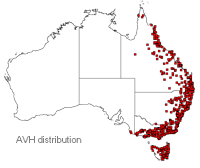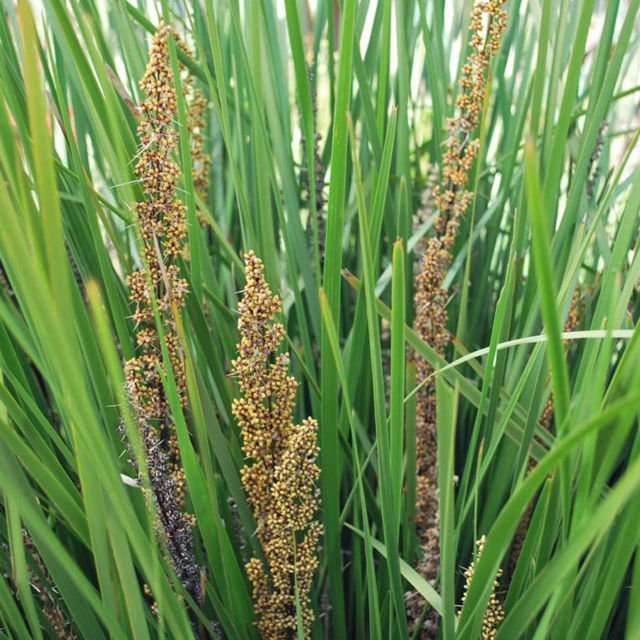
Lomandra Longifolia
Common name: Spiny headed Mat-rush
I grow best: Drought tolerant
• Full sunlight shade, ground cover
• Height up to 1.2m & width 1m
• Well drained soils
• Flowers Spring to Summer
• Eastern Suburb Banksia Scrub
Looks like: Variable species, grass-like with tough, strap, flat leaves 40-80cms to 1m long and 8-12mm wide and are usually taller than the flowering stem. Leaf bases are broad with yellow, orange or brownish margins and the tips of the leaves are prominently toothed. With long spiny bracts at the base of flower clusters. Flowers are yellowish with purple centers. Flowering August to December. Perennial, rhizomatous herb. Leaves are glossy green, shiny, firm, flat. The inflorescence is usually a panicle of clusters of sessile flowers. Each cluster has a sharp, slender, straw-colored bract at its base, which gives it a dense spike-like structure. The inflorescence is usually about half the leaf length (500mm) and individual flowers are about 4mm long. Flowers of L. longifolia are scented and dioecious, with the female flower often a little bit longer or larger than the male flower. The heavy-smelling nectar on flowers can attract pollinating beetles. Flowering in warm temperature (late winter/early spring), fruiting occurs 1-2 months after flowering.The clustered flower head is always shown as brown seed capsules throughout the year. During the flowering period, sepals are shiny brown, thin and papery, while the petals are fleshy and creamy-yellow colored.
Habitat & Growing: A member of the Xanthorrhoeaceae family, it can grow in a range of sandy soils, in swamps and wet places to the montane zone on banks of creeks, rocky hillsides, cliffs and open forests.
L. longifolia is suitable for growing indoors in containers as well as outdoors and requires moist soil for growth. However, its thick leaves and also the extensive root system help L. longifolia tolerate dryness. It can grow in a wide range of soil from light (sandy) to heavy (clay) soil. There is no special soil pH requirement and it can grow in semi-shaded area like light woodland or non-shaded area. It is relatively easy to maintain L. longifolia. Moisture soil is required for growth of the plant, but it would not die out without watering. It is very high tolerant to dryness and does not have pest and disease. L. longifolia propagates by seed or clump division. When the fruits are matured and turn brown, sow the seed in moist soil for 6 weeks in the greenhouse/outdoor. Clump division: by dividing the plant into half and plant them in moist soil indoor/outdoor. There is not much cultivation limitation for this plant in Australia. L. longifolia is highly drought-tolerant but also can tolerate occasional flooding, withstand low temperature down to -7°C and succeeds in moist soil in Australia. However, the plant can die back when it is in a wet winter nor does it survive well in areas with cooler summer.
| Family | Xanthorrhoeacea |
| Plant Type | Grass or grass-like, Clumping perennial |
| Width | 0.6 |
| Flowering Time | Spring, Winter |
| Soil Type | Sandy, Loamy, Sandy loam, Clay loam, Saline, Poor soil |
| Climate Zone | Tropical, Sub-tropical, Warm temperate, Cool temperate, Mediterranean |
| Growth Habit | Evergreen, Dense foliage |
| Soil Moisture | Dry, Well-drained, Moist moderate drainage |
| Special Uses | Edible, Erosion control |
| Height | 1 |
| Flower Colour | Cream, Yellow |
| pH Level | Acid, Neutral |
| Plant Environment | Low maintenance garden, Poolside, Container growing, Coastal garden, Drought resistant |
| Light | Sunny, Light shade |
| Lifespan | Perennial |
| Frost Tolerance | Tolerates light frost |
| Attracts Wildlife | Bees, Other insects |
Distribution: Common in many areas including sand dunes, grassy headlands, open woodland forest, creek banks all over Australia

Traditional uses: The white starchy bases of the Lomandra are chewed by Aboriginal people. They supplied an energy boost on long walks. The seed was pounded and made into flour or eaten whole and mixed with native honey. The strappy leaves were used to weave baskets for carrying food as well as making eel traps and nets. Roots of the Lomandra were also used as a medicine for insect bites.

